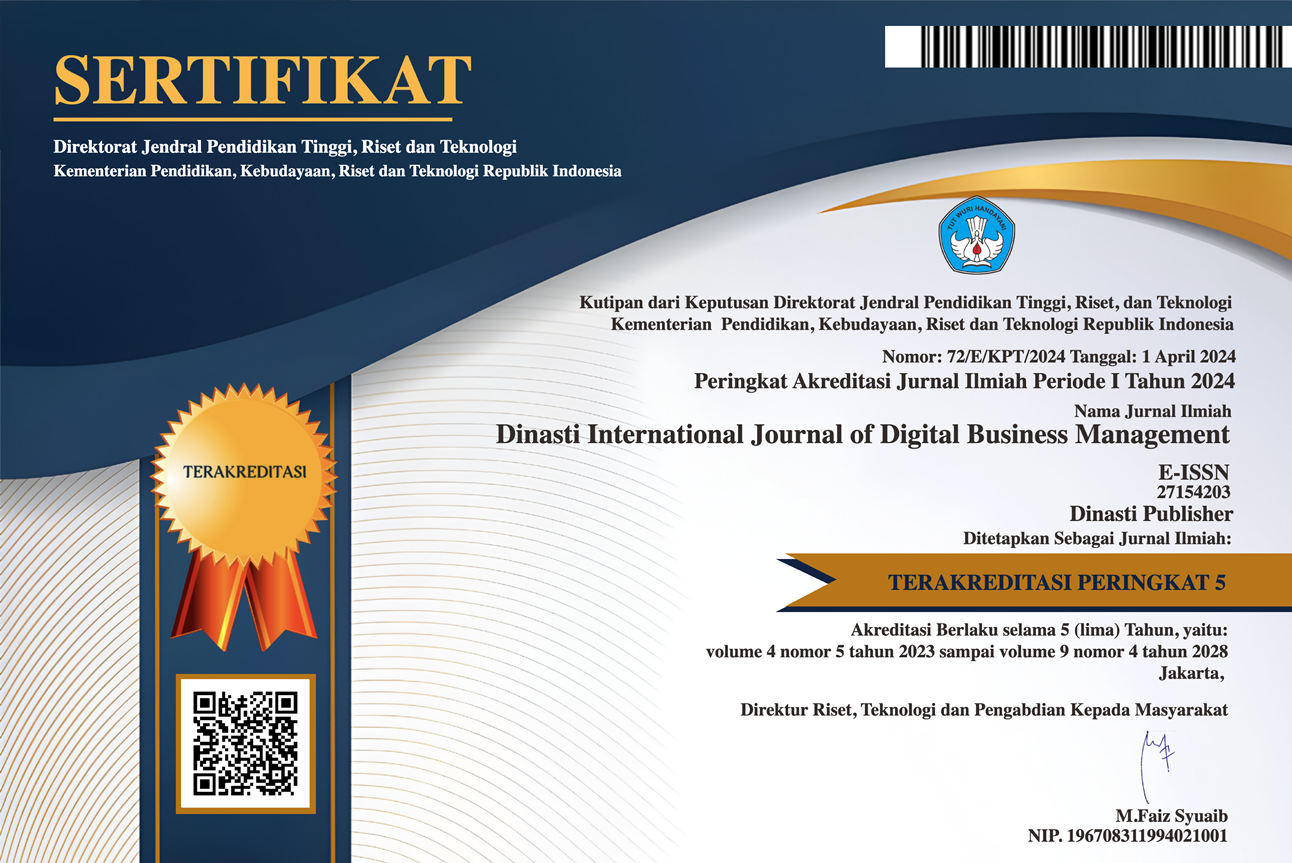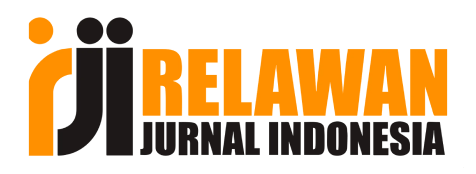The Impact of Fiscal and Monetary Policies on The Growth of The Electric Vehicle Population in Indonesia
DOI:
https://doi.org/10.38035/dijdbm.v6i1.3765Keywords:
Fictitious Policy, Monetary Policy, Electric VehiclesAbstract
This study aims to determine the impact of fixed and monetary policies on the growth of the electric vehicle population in Indonesia. The method used in this study is qualitative with a literature review approach. The data analysis technique used in this study is critical analysis. The results of the study show that electric vehicle (EV) production is a top priority, as well as the development of supporting infrastructure regulated in the 2020-2024 National Medium-Term Development Plan (RPJMN). One of the impacts that has occurred on the electric vehicle industry is the provision of special incentives for battery-based electric cars. The form of incentives for consumers includes providing a 0% tax on the Luxury Goods Value Added Tax (PPnBM).
References
Anderson, L. C., & Jordan, J. L. (1968). Monetary and Fiscal Actions: A Test of Their Relative Important in Economic Stabilization. Federal Reserve Bank of St. Louis Review, 80, 29-45.
Aprilia, A. D., Darsono, & Agustono. (2016). Analysis of Fiscal and Monetary Influences on Labor Absorption in the Agricultural Sector in Indonesia. Agrista, 4(3), 230-238.
Bank Indonesia. (2014a). Monetary Policy Objectives of Bank Indonesia. bi.go.id. http:// www.bi.go.id/id/moneter/tujuan-kebijakan/ Contents/Default.aspx
Bank Indonesia. (2014b). Monetary Policy Framework in Indonesia. bi.go.id. http://www.bi.go.id/id/moneter/kerangka-kebijakan/ Contents/Default.aspx
Budiyanti, E. (2014). The Influence of Monetary Policy on the Performance of the Manufacturing Industry Sector in Indonesia. Journal of Economics & Public Policy, 5(2), 145-159. https://doi.org/10.22212/jekp.v5i2.79
Castelnuovo et al. (2019). Castelnuovo, E., & Lim, G. (2019). What do we know about the macroeconomic effects of fiscal policy? A brief survey of the literature on fiscal multipliers. Australian Economic Review, 52(1). https://doi.org/10.1111/1467-8462.12313
Charpe, M., Flaschel, P., Hartmann, F., & Proaño, C. (2011). Stabilizing an Unstable Economy: Fiscal and Monetary Policy, Stocks, and The Term Structure of Interest Rates. Economic Modelling, 28(5). https://doi.org/10.1016/j.econmod.2011.05.005
Chidiebere Ekwe, M., Ogbonnaya, A. K., & Omodero, C. O. (2017). Monetary Policy and Nigeria’s Economy: An Impact Investigation. International Journal of Economics and Finance, 9(11), 218. https://doi.org/10.5539/ijef.v9n11p218
ekon.go.id. (2023). Encouraging the Performance of the Automotive Industry Sector Coordinating Minister Airlangga emphasized that Indonesia is ready to become an electric vehicle manufacturer for the global market. ekon.go.id. https://ekon.go.id/publikasi/detail/5527/dorong-kinerja-sektor-industri-otomotif-menko-airlangga-tegaskan-indonesia-siap-menjadi-produsen-electric-vehicle-bagi-pasar-global
Fadhilah, F. A. et al. (2023). Indonesia Electric Vehicle Outlook 2023. Electrifying Transport Sector: Tracking Indonesia EV Industries and Ecosystem Readiness. IESR, 16.
Fatas, A., & Mihov, I. (2012). Fiscal Policy as Stabilization Tool. The B.E. Journal of Macroeconomics, 12(3), 1-66.Fazli, A. Z. (2024). The Role of Electric Vehicles in Economic Growth and Mineral Utilization. medcom.id. https://www.medcom.id/ekonomi/bisnis/VNnwJMvb-peran-kendaraan-listrik-dalam-pertumbuhan-ekonomi-dan-pemanfaatan-mineral
Göndör, M., & Bresfelean, V. P. (2012). REPTree and M5P for Measuring Fiscal Policy Influences on the Romanian Capital Market during 2003-2010. International Journal of Mathematics and Computers in Simulation, 4(6), 378–386.
Hidranto, F., Nuraini, R., & Sari, E. I. (2023). Collaboration in the Development of Electric Vehicle Infrastructure. indonesia.go.id. https://indonesia.go.id/kategori/editorial/6892/kolaborasi-pembangunan-infrastruktur-kendaraan-%20listrik?lang=1
Huynh, C. M., & Nguyen, T. L. (2020). Fiscal Policy and Shadow Economy in Asian Developing Countries: Does Corruption Matter? Empirical Economics, 59(4), 1745–1761. https://doi.org/10.1007/s00181-019-01700-w
Imoughele, L. E., & Ismaila, M. (2014). Empirical Investigation of the Impact of Monetary Policy on Manufacturing Sector Performance in Nigeria (1986- 2012). International Journal of Education and Research, 2(1), 1-20.
Joe, K. A. (2024). This year's Automotive Industry is Supported by Economic Growth and Electric Vehicles. gaikindo.or.id. https://www.gaikindo.or.id/industri-omotif-tahun-ini-ditopang-pertumbuhan-ekonomi-dan-kendaraan-listrik/
Kemenkeu.go.id. (2024). To increase the competitiveness of the national automotive industry, the government provides a number of incentives. kemenkeu.go.id. https://www.kemenkeu.go.id/informasi-publik/publikasi/berita-utama/Tingkatkan-Daya-Saing-Industri-Otomotif
Kuncoro, M. (2004). Regional Autonomy & Development: Reform, Planning, Strategy, and Opportunity. Jakarta: Erlangga
Kusuma, R. R., & Limanto, A. D. (2023). Moving Indonesia: The Multi-Stakeholder Network Building Indonesia’s EV Production. World Economic Forum. https://www.weforum.org/agenda/2023/02/moving-indonesia-the-multi-stakeholder-network-building-indonesia-s-ev-production-market/
Kusumo, A. Hawani, Y. S., Azhara, P., Septian, R., & Siregar, P. A. (2024). The Role of Monetary Policy in Encouraging Economic Growth in the City of Medan. Widya Balina, 9(1), 54-62.
Leavy, P. (2017). Research Design: Quantitative, Qualitative, Mixed Methods, Arts-Based, and Community-Based Participatory Research Approaches. New York: Guilford Press.
Mahdi, Aimon, H., & Syofyan, E. (2014). The Influence of Fiscal and Monetary Policy on Economic Growth in Jambi Province. Journal of Economic Studies, 2(4), 1-9.
Minister of Energy and Mineral Resources. (2020). Regulation of the Minister of Energy and Mineral Resources Number 13 of 2020 concerning the Provision of Electric Charging Infrastructure for Battery-Based Electric Motorized Vehicles.
Minister of Transportation. (2022). Regulation of the Minister of Transportation Number 15 of 2022 concerning the Conversion of Motor Vehicles Other than Motorcycles with Combustion Motor Drives into Battery-Based Electric Motorized Vehicles.
Minister of Industry. (2022). Regulation of the Minister of Industry Number 6 of 2022 concerning Specifications, Development Roadmaps, and Provisions for Calculating the Value of Domestic Component Levels for Battery-Based Electric Vehicles.
Nangarumba, M. (2016). Analysis of the Influence of Monetary Policy, Fiscal Policy, and Credit Distribution on Economic Growth in East Java Province in 2006-2016. Journal of Economics and Development Studies, 8(2), 114-130. http://dx.doi.org/10.17977/um002v8i22016p11
MNI. (2024). Staff of the Minister of Energy and Mineral Resources: The Electric Vehicle Population in April 2024 Reaches 133,225 Units. nikel.co.id. https://nikel.co.id/2024/06/20/stafsus-menteri-esdm-populasi-kendaraan-listrik-april-2024-capai-133-225-unit/
Nopirin. (1992). Monetary Economics (book 2). Yogyakarta: BPFE.
Odior, E. S. (2013). Macroeconomic Variables and the Productivity of the Manufacturing Sector in Nigeria: A Static Analysis Approach. Journal of Emerging Issues in Economics, Finance and Banking (JEIEFB), 1(5), 362-380.
Prasidya, Y. (2020). Indonesia to Develop Circular Economy for EVs, Boost Battery Industry. thejakartapost.com.
President of the Republic of Indonesia. (1999). Law Number 23 of 1999 concerning Bank Indonesia.
President of the Republic of Indonesia. (2003Willywiganti29). Law Number 17 of 2003 concerning State Finance.
President of the Republic of Indonesia. (2004). Law No. 3 of 2004 concerning Amendments to Law of the Republic of Indonesia No. 23 of 1999 concerning Bank Indonesia.
President of the Republic of Indonesia. (2009). Law Number 6 of 2009 concerning the Stipulation of Government Regulations in Lieu of Law Number 2 of 2008 as Law.
President of the Republic of Indonesia. (2019). Government Regulation Number 73 of 2019 concerning Taxable Goods Classified as Luxury in the Form of Motor Vehicles Subject to Sales Tax on Luxury Goods.
President of the Republic of Indonesia. (2019). Presidential Regulation Number 55 of 2019 concerning the Acceleration of the Battery-Based Electric Motorized Vehicle Program for Road Transportation.
President of the Republic of Indonesia. (2021). Government Regulation Number 74 of 2021 concerning Amendments to Government Regulation Number 73 of 2019 concerning Taxable Goods Classified as Luxury in the Form of Motor Vehicles Subject to Sales Tax on Luxury Goods.
Purwono. (2008). Literature Studies. Info Persadha, 6(2), 66-72.
Ramadhanti, A. & Pramesti, M. (2023). Analysis of the Influence of Fiscal and Monetary Policy on Indonesia's Stock Return Rate in 2015-2019. Journal of Applied Business Administration, 6(3), 22-36. https://doi.org/10.7454/jabt.v6i1.1090
Rosya, N., Amar, S., & Syofyan, E. (2013). Analysis of Aggregate Demand and Aggregate Supply in West Sumatra. Journal of Economic Studies, 2(3), 66- 84.
Suartika, I. P. G. (2023). Accelerating the Development of the Electric Vehicle Industry to Encourage Sustainable Green Economy Transformation. Scientific Paper of the National Institute of the Republic of Indonesia, 1-68.
Sukirno, S. (2012). Macroeconomics Introductory Theory (3rd edition). Jakarta: RajaGrafindo Persada.
Sullivan, A., & Sheffrin, S. M. (2003). Economics: Principles in Action. Upper Saddle River, NJ: Pearson Prentice-Hall.
WITH THE (2022). Electric car batteries are expensive because of this. voi.id. https://voi.id/teknologi/208407/baterai-mobil-listrik-mahal-ternyata-karena-ini
Warjiyo, P. (2004). The application of monetary policy as an economic reference. Jakarta.
Warjiyo, P., & Solikin. (2003). Monetary Policy in Indonesia. Jakarta: The Center for Central Banking Education and Studies (PPSK) of Bank Indonesia
Downloads
Published
Issue
Section
License
Copyright (c) 2024 Willy Novananda Siregar, Mimin Milasari, David Candra Viasco, Julius Dermawan Aritonang, Retiono Kunto

This work is licensed under a Creative Commons Attribution 4.0 International License.
Authors who publish their manuscripts in this journal agree to the following conditions:
- The copyright on each article belongs to the author(s).
- The author acknowledges that the Dinasti International Journal of Digital Business Management (DIJDBM) has the right to be the first to publish with a Creative Commons Attribution 4.0 International license (Attribution 4.0 International (CC BY 4.0).
- Authors can submit articles separately, arrange for the non-exclusive distribution of manuscripts that have been published in this journal into other versions (e.g., sent to the author's institutional repository, publication into books, etc.), by acknowledging that the manuscript has been published for the first time in the Dinasti International Journal of Digital Business Management (DIJDBM).















































